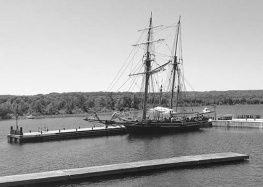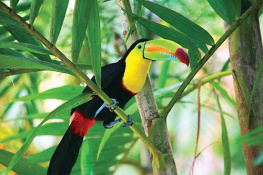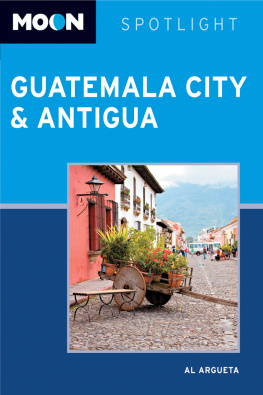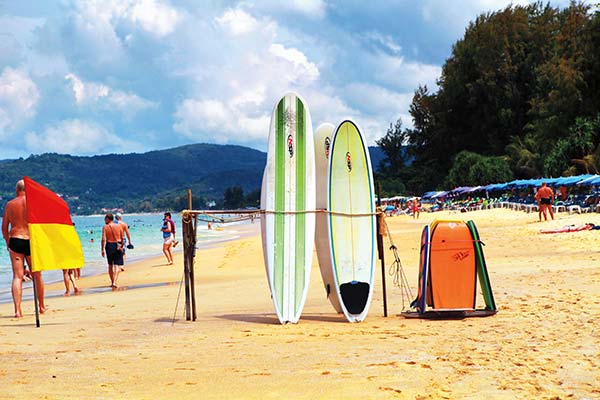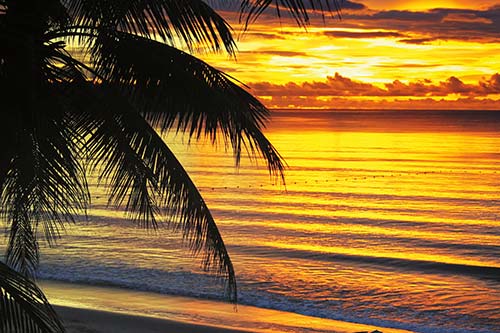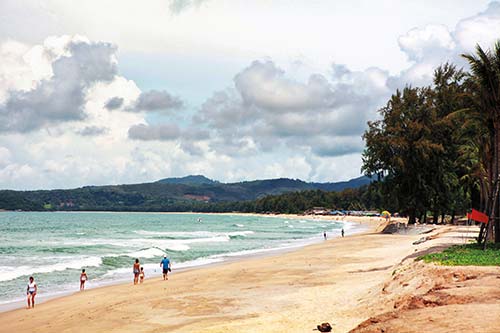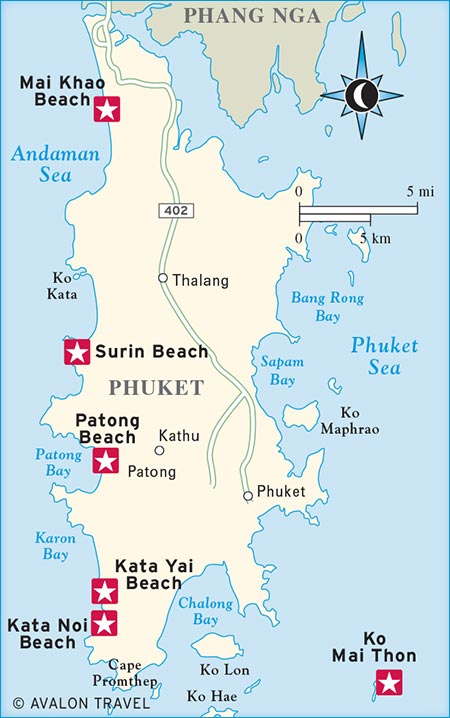Thailands largest island is about 48 kilometers (30 mi) long and 16 kilometers (10 mi) across. Imagine an elongated star with extra points and youll have a rough idea of what Phuket looks like from above. The points are promontories, rock formations jutting out into the ocean and separating the island into numerous individual beaches with curving coasts. The road system on the island is very well maintained, and there is both a coastal road that encircles nearly the whole island and large multilane inland roads. Off the main island, the Andaman Sea is littered with small islands and elegant rock formations jutting out from the sea. Many of the surrounding islands could be destinations in their own right, if not overshadowed by the main island.
Phuket Town.
Phuket and the surrounding areas rebuilt quickly after the 2004 tsunami, but the momentum from the redevelopment seems not to have slowed once all of the damage was repaired. There are new resorts and villas popping up in every corner, new shopping malls, bars and restaurants opening just off the beach and further inland, and more visitors coming every year to stay, eat, drink, and shop in those new places. If you want to experience some of what Phuket became famous for, hurry up and come now: Even the most remote beaches and islands wont be the same in the next few years.
Look for S to find recommended sights, activities, dining, and lodging.
S Mai Khao Beach: This quiet beach is fast becoming a favorite among families and local visitors, thanks to the ever-increasing selection of decent resorts and lack of crowds ().
S Surin Beach: This beautiful beach is quiet and relaxed, but offers plenty to do and great accommodations options ().
S Patong Beach: This busy, bustling beach is where youll find all the action. Whether youre looking to shop, jet ski, parasail, or drink and dance the night away, youll find it here ().
S Kata Yai and Kata Noi Beaches: These two beaches have clean, white sand and beautiful views, without the big crowds ().
S Ko Mai Thon: This little island is surrounded by stunning coral, making it a great place for snorkeling ().
HISTORY
During prehistoric times, Phuket was inhabited by indigenous people sometimes referred to as Negritos, a group of hunter-gatherer pygmies who were, like many indigenous Southeast Asians, displaced and assimilated during waves of successive migration. Although no clear records exist, the last of the pygmy tribes was probably wiped out in the 19th century.
Although Phuket, then called Jang Si Lang or Junk Ceylon, shows up in some of Ptolemys maps and writings, the islands history is largely unknown until about 800 years ago. Phukets main natural resource, tin, was mined by prehistoric inhabitants, but what is now known as Phuket didnt come to the attention of the Thai people until the 13th century, when they arrived for trading and tin mining.
Word spread of the abundant natural resources, which included not only tin but also pearls, and by the 15th-16th centuries Thalang, as the island was then known, became a popular trading center, attracting the Dutch, Portuguese, and French. While Thailand has never technically been colonized, the Dutch set up trading posts in the region in the 16th century, and parts of the island were governed by tin traders under a concession. Phuket was even under the administration of the French between 1681 and 1685.
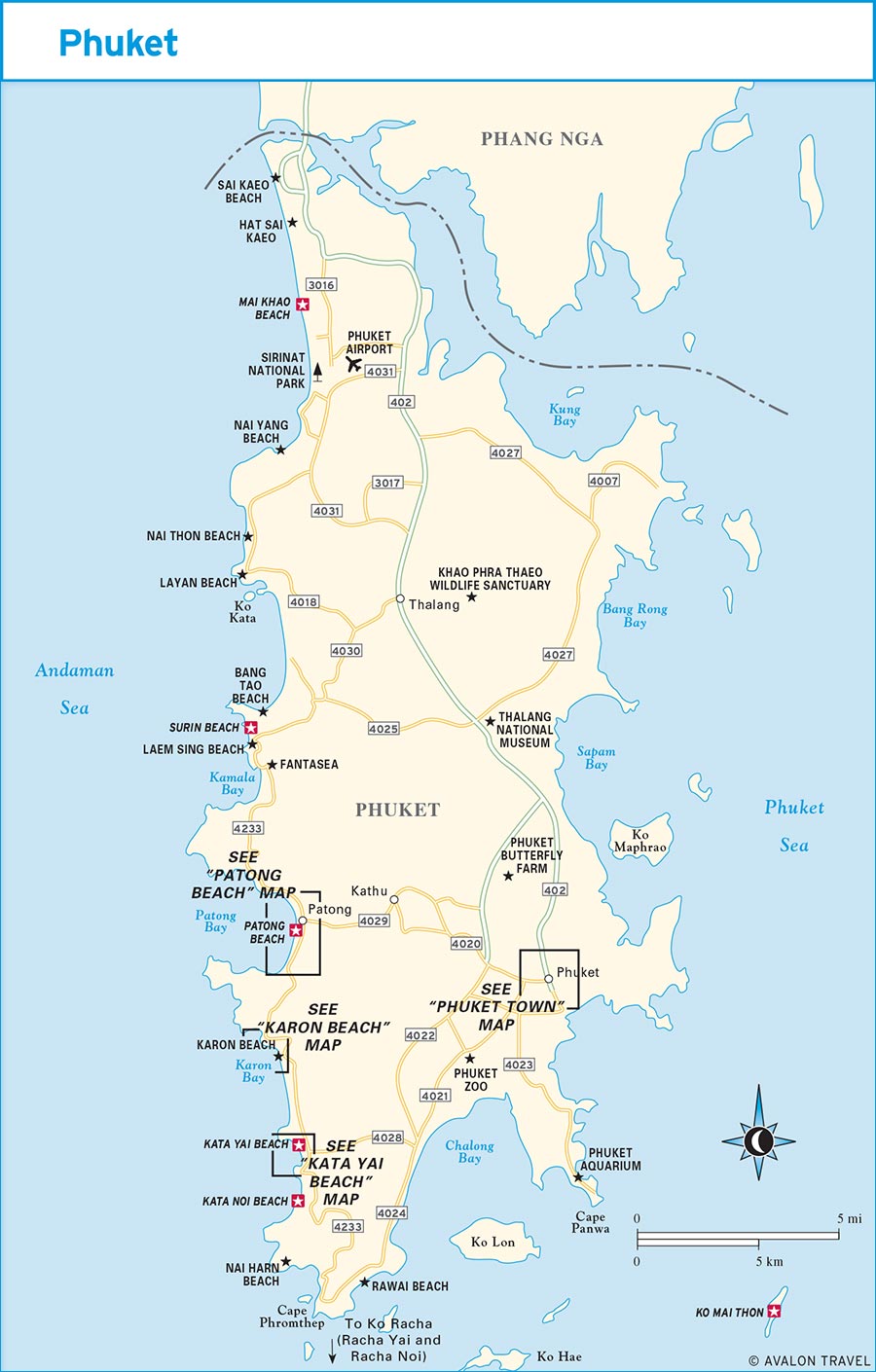
At the end of the Ayutthaya period, after the Burmese had sacked the capital city and were pushed back by General Taksin, they set their sights on Phuket and the surrounding region, invading the island and trying to take it over in 1785. The islands governor was killed by the intruders, but Phuket did not fall, according to the story told by nearly every islander. The governors widow and her sister, both disguised as men, led a force against the siege and succeeded in repelling the Burmese after weeks of fighting. In recognition of their heroism, the two women were granted noble titles by King Rama I, and today there is a statue dedicated to them in the middle of the island.
After that dramatic high point in Phukets history, the island continued to be used primarily as a tin-mining area, and later for rubber plantations, attracting thousands of Chinese immigrants in the 19th century, many of whom remained and, with the Muslim fisherfolk who immigrated from what is now Malaysia, constitute much of the modern indigenous population.
It wasnt until the 1970s that intrepid foreign travelers discovered Phukets beauty and began to visit the island to enjoy the mountainous rainforests and pristine beaches. Starting with some small bungalow developments on Patong Beach, the island has boomed into a world-class tourist destination over the past three decades. Urban Thais in their 50s and 60s will often laugh and reminisce about what the Andaman coast used to be like before travelers and developers realized it was a natural tourist destination, when theyd head down on motorcycles to the largely untouched island for some adventure. Fast-forward 30 years, and the dirt roads and simple local folks have since been replaced by an exceptionally sophisticated infrastructure with easily navigable roads, hospitals, shopping malls, and an international airport.



